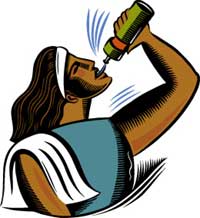|
 No matter how hard you try, without protein you simply can't put on mass or retain your shape while dieting. But how much do you really know about this essential nutrient? It isn't as simple as eating 0.8 gram per pound of bodyweight (or 1 gram . . . or 2 grams). A multitude of factors affect how digestible and usable a protein is, as well as how the body will use it, whether for building or for stoking its furnace. Protein quality, meal timing and other nutritional factors all play a role in how protein will be used. For a bodybuilder interested in building muscle, choosing the right proteins is job one—so read on! No matter how hard you try, without protein you simply can't put on mass or retain your shape while dieting. But how much do you really know about this essential nutrient? It isn't as simple as eating 0.8 gram per pound of bodyweight (or 1 gram . . . or 2 grams). A multitude of factors affect how digestible and usable a protein is, as well as how the body will use it, whether for building or for stoking its furnace. Protein quality, meal timing and other nutritional factors all play a role in how protein will be used. For a bodybuilder interested in building muscle, choosing the right proteins is job one—so read on!
| Form |
Function |
Pros |
Cons |
| FREE-FORM |
Doesn't require digestion |
Allows intake of single amino
acids in high doses (some single amino acids
reduce muscle catabolism or have other specific
benefits) |
Relatively expensive |
| HYDROLYZED PROTEIN |
Predigestion speeds
absorption |
Shorter chain length peptides
(if available) may increase anabolic hormone
(IGF-1) levels |
 |
| BRANCHED-CHAIN |
Increases ammonia production
during exercise, which acids in formation of
alanine from glucose |
Can be converted into energy
to prevent muscle catabolism |
Relatively expensive form of
energy for muscle action |
| DI-/TRIPETIDES |
Two and three-amino acid
molecules that are quickly absorbed |
Increase anabolic hormone
(IGF-1) levels in burn patients (increases
protein utilization) |
Cost, availability |
| PLANT PROTEINS |
Proteins appropriate for
vegans, vegetarians and omnivores (chiefly from
legumes, nuts, grains) |
Inexpensive and often
fat-free; rich in antioxidants, fiber, etc. |
Often incomplete (exception:
soy); must combine complementary
proteins |
| ANIMAL FOODS |
Dairy, poultry, eggs, beef,
etc., rich in essential amino acids |
Usually complete (contain all
essential amino acids: exception: gelatin) |
Often high in saturated
fat |
|
|